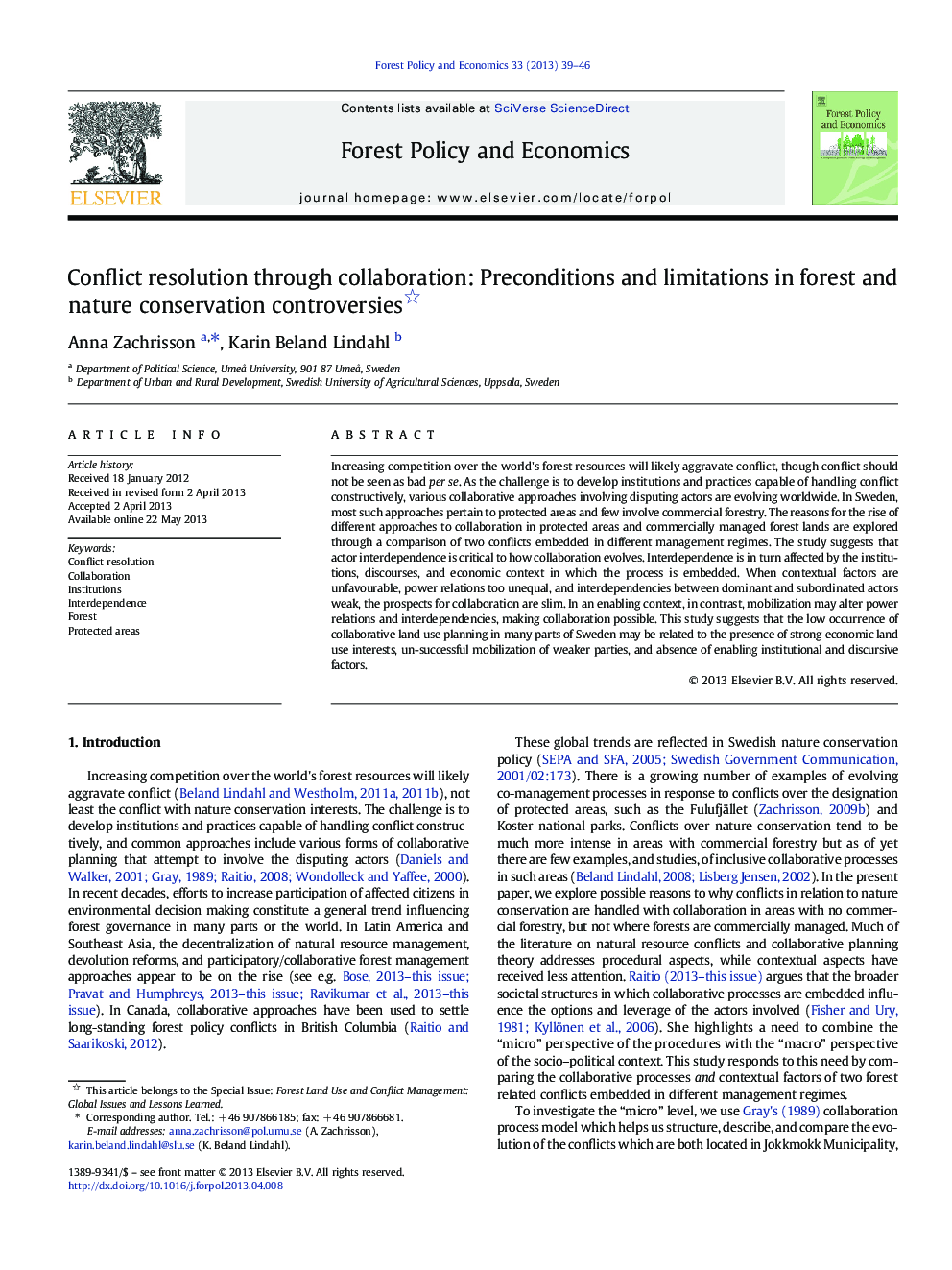| Article ID | Journal | Published Year | Pages | File Type |
|---|---|---|---|---|
| 6545049 | Forest Policy and Economics | 2013 | 8 Pages |
Abstract
Increasing competition over the world's forest resources will likely aggravate conflict, though conflict should not be seen as bad per se. As the challenge is to develop institutions and practices capable of handling conflict constructively, various collaborative approaches involving disputing actors are evolving worldwide. In Sweden, most such approaches pertain to protected areas and few involve commercial forestry. The reasons for the rise of different approaches to collaboration in protected areas and commercially managed forest lands are explored through a comparison of two conflicts embedded in different management regimes. The study suggests that actor interdependence is critical to how collaboration evolves. Interdependence is in turn affected by the institutions, discourses, and economic context in which the process is embedded. When contextual factors are unfavourable, power relations too unequal, and interdependencies between dominant and subordinated actors weak, the prospects for collaboration are slim. In an enabling context, in contrast, mobilization may alter power relations and interdependencies, making collaboration possible. This study suggests that the low occurrence of collaborative land use planning in many parts of Sweden may be related to the presence of strong economic land use interests, un-successful mobilization of weaker parties, and absence of enabling institutional and discursive factors.
Related Topics
Life Sciences
Agricultural and Biological Sciences
Forestry
Authors
Anna Zachrisson, Karin Beland Lindahl,
